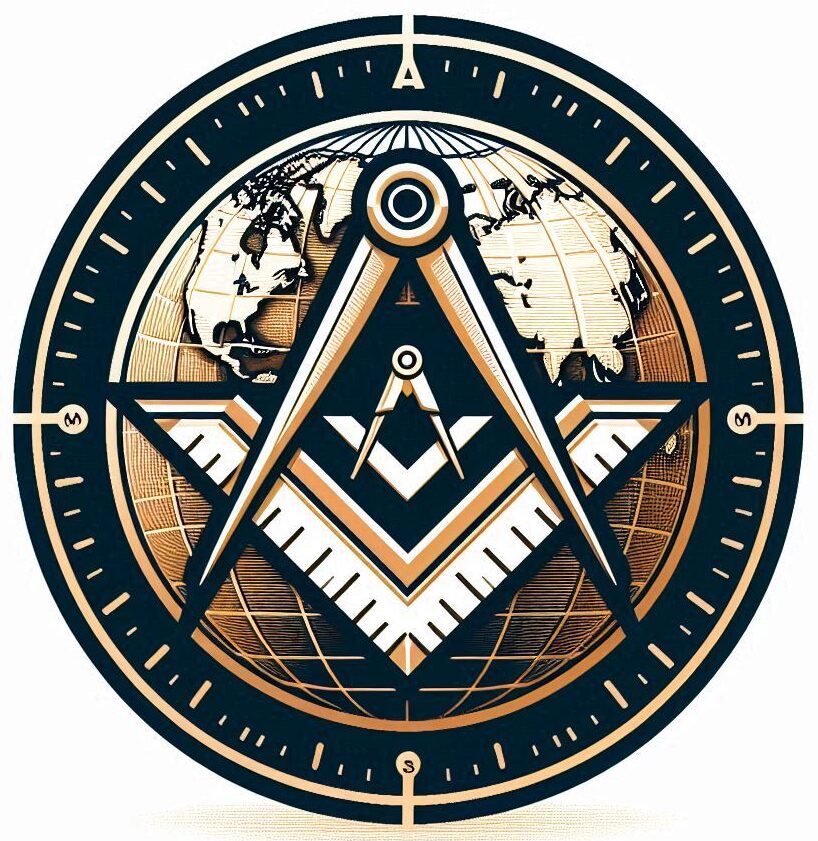The Temple Legend: Freemasonry’s Sacred Blueprint for Moral and Spiritual Building
Introduction
We explore one of the most enduring and profound symbols in Freemasonry, the Temple of King Solomon. More than a historical monument, the Temple is a spiritual blueprint, a moral allegory, and a cornerstone of Masonic tradition. Its legend has shaped centuries of ritual, reflection, and personal transformation.
Historical Origins: Solomon’s Temple in Scripture and History
The story begins in the 10th century BCE, when King Solomon, son of David, fulfiled a divine promise by constructing the First Temple in Jerusalem. Built on Mount Moriah, a site already sacred in Abrahamic tradition, the Temple was designed as a permanent dwelling place for the Ark of the Covenant.
Scripture tells us it took seven years to build, involved tens of thousands of workers, and was adorned with cedar from Lebanon, gold overlays, and intricate carvings. But beyond its grandeur, the Temple was the spiritual heart of Israel, the meeting place between God and His people.
Though destroyed by the Babylonians in 586 BCE, its legacy endured. The Temple became a symbol of divine presence, national identity, and sacred architecture influencing Judaism, Christianity, and Islam alike. Moreover, in our current circumstances, political affairs play a big role, with the Temple Mount also hosting what is considered the oldest extant Islamic architectural specimen of the world , the Dome of the Rock (or Qubbat As-Sakhrah).
Freemasonry and the Temple Legend: A Symbolic Adoption
Fast forward to the early 18th century, when speculative Freemasonry emerged in England. No longer limited to operative stonemasons, this new fraternity adopted the tools and language of the builder to craft a moral philosophy. And what better symbol to anchor that philosophy than Solomon’s Temple?
The Temple offered everything Freemasonry needed: sacred geometry, divine purpose, and a master builder, Hiram Abiff. His story, drawn from biblical and apocryphal sources, became central to Masonic ritual. Hiram’s fidelity, sacrifice, and silence in the face of death are dramatized as lessons in integrity, resilience, and the pursuit of truth.
Tools of the Craft: Moral Lessons in Stone
In Masonic symbolism, the Temple is not a physical structure but a metaphor for the self. Each Mason is a living stone, shaped and refined through discipline, reflection, and fraternity. The tools of the builder, the square, compasses, level, and plumb — become instruments of ethical development:
- The Square teaches us to act with virtue and fairness.
- The Compasses remind us to set boundaries and live with moderation.
- The Level speaks to equality and humility.
- The Plumb encourages uprightness and honesty.
The Temple’s unfinished nature is no accident. It reflects the ongoing journey of self-improvement, the idea that we are always building, always learning, always striving toward the divine.
Mystical Echoes: The Temple as Cosmic Symbol
Freemasonry’s use of the Temple legend also resonates with mystical traditions. In Jewish Kabbalah, the Temple is seen as a microcosm of the universe, a reflection of heavenly order on Earth. Its architecture mirrors the structure of creation, and its rituals echo the rhythm of divine communion.
Freemasonry, while not a religion, draws from these esoteric currents to offer a spiritual framework grounded in ancient wisdom. The Temple becomes a place not of worship, but of awakening, a sacred space within the heart where truth, light, and brotherhood reside.
Enduring Relevance: Why the Temple Still Matters
So why does the Temple legend endure? Why do we still gather in lodges, speak of Hiram, and invoke the tools of the builder?
Because the Temple is timeless. It speaks to the universal human desire to build something meaningful, not just in stone, but in spirit. It reminds us that character is constructed, that wisdom is earned, and that the sacred is not confined to holy ground but lives within each of us.
For Freemasons, the Temple is both a memory and a mission. It calls us to build lives of purpose, to shape our conduct with care, and to support one another in the great work of becoming better men.
Closing Reflection
The Temple of Solomon may have fallen to dust, but its legend lives on, in our rituals, in our symbols, and in our hearts. It is not merely a story of ancient architecture, but a call to moral architecture. Each time we enter the lodge, we step into that sacred blueprint. Each time we raise a brother, we lay another stone in the Temple of humanity.
Let us continue to build those foundations with wisdom, with strength, and with beauty.
